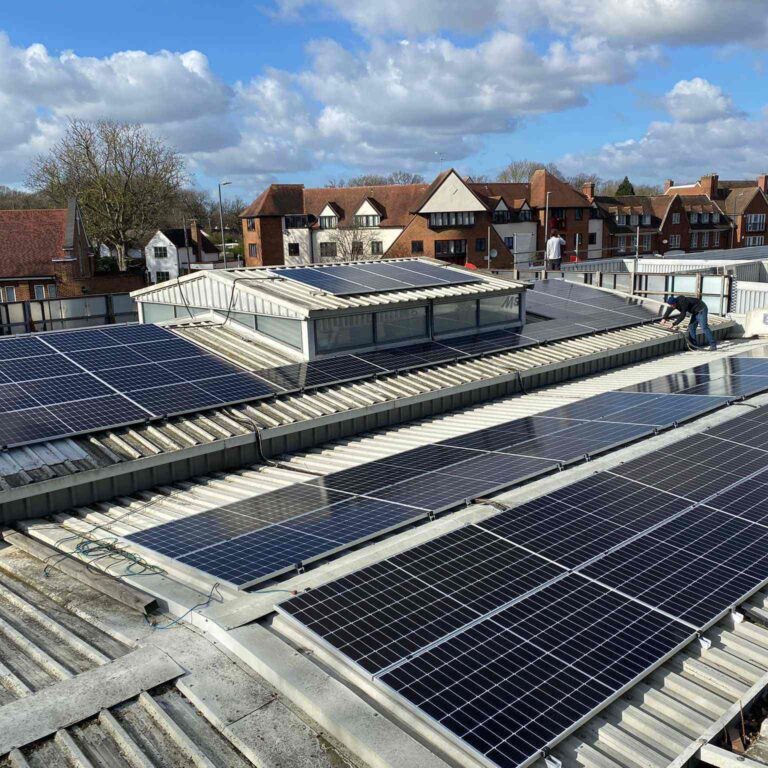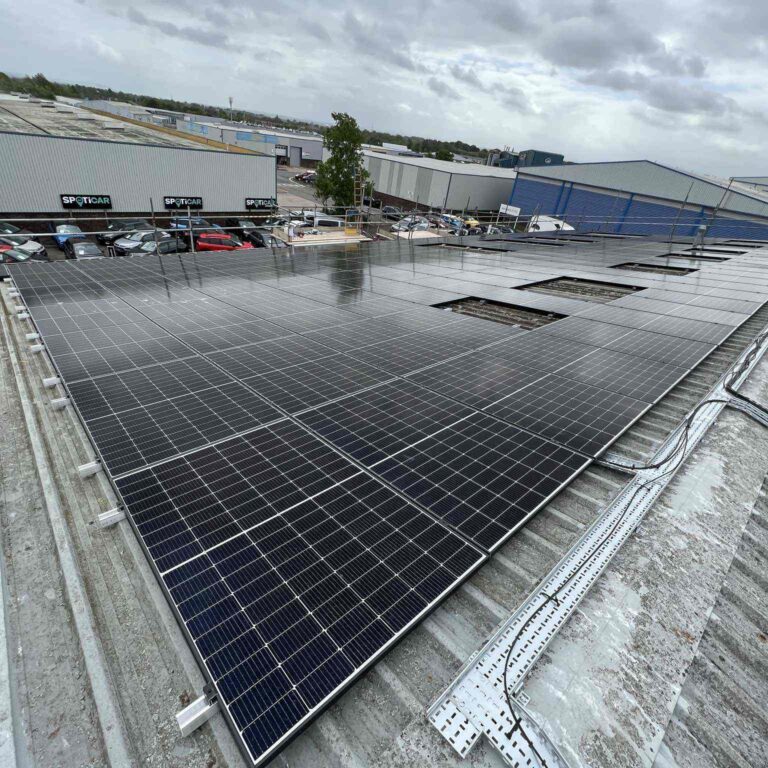The shift towards renewable energy sources has created an unprecedented demand for efficient, scalable, and reliable energy storage systems. At the forefront of this transformation is the Utility Scale Battery Energy Storage System (BESS), a crucial innovation that enables the storage and dispatch of electricity generated from renewable sources like solar and wind on a large scale. Utility Scale BESS is not only helping grid operators balance supply and demand but also playing a significant role in enhancing grid stability, reducing costs, and paving the way for a cleaner, more resilient energy infrastructure.
What is Utility Scale BESS?
Utility Scale BESS refers to large battery systems installed at utility or grid level, designed to store significant amounts of energy and release it as needed. Unlike smaller energy storage solutions for residential or small-scale commercial use, these systems are designed to support large grids and utility networks, with the capacity to store several megawatt-hours (MWh) to gigawatt-hours (GWh) of electricity.
These storage systems work by storing excess energy generated from renewable sources during times of low demand (such as midday for solar power) and discharging it during peak demand periods. This capability makes Utility Scale BESS a powerful tool in achieving sustainable energy goals, enhancing grid reliability, and lowering overall energy costs.
Key Benefits of Utility Scale BESS
- Grid Stability and Reliability One of the primary benefits of Utility Scale BESS is its ability to stabilize the grid. Renewable energy sources, while clean, are inherently intermittent. Solar and wind power depend on weather conditions, which can lead to fluctuations in energy supply. BESS helps by smoothing out these fluctuations, storing excess energy when supply is high, and releasing it when supply is low, ensuring a continuous, stable flow of electricity to the grid.
- Peak Shaving and Load Shifting Utility Scale BESS is instrumental in peak shaving and load shifting, which reduces the strain on the grid during high-demand periods. Peak shaving allows operators to release stored energy during times of peak demand, reducing the need for costly peaker plants and lowering energy prices. Load shifting, on the other hand, enables the grid to shift energy consumption to non-peak periods, maximizing efficiency and reducing the reliance on fossil fuel-based energy sources.
- Enhanced Integration of Renewable Energy By storing excess energy generated from renewables, BESS helps utilities integrate higher proportions of solar, wind, and other renewable sources into the grid. This is a significant step toward meeting global carbon reduction goals. Utility Scale BESS ensures that the energy generated from renewables is used efficiently, minimizing wastage and dependency on non-renewable energy.
- Reduction in Carbon Emissions Utility Scale BESS systems contribute to reducing carbon emissions by decreasing the need for fossil fuel-based backup generation during peak demand periods. By storing renewable energy, these systems help offset the carbon footprint associated with non-renewable generation, thus aligning with global carbon neutrality goals.
- Emergency Backup Power In the event of grid disturbances or natural disasters, Utility Scale BESS can provide emergency backup power to critical infrastructure. This resilience is invaluable during events like storms, wildfires, or equipment failures, helping communities recover faster and preventing prolonged power outages.
Types of Batteries Used in Utility Scale BESS
Several types of batteries are used in Utility Scale BESS, each with unique characteristics suitable for different applications:
- Lithium-Ion Batteries Lithium-ion batteries are the most commonly used type of battery for Utility Scale BESS. Known for their high energy density and relatively long life cycles, these batteries offer rapid response times, making them ideal for frequency regulation and short-term energy storage. Despite concerns over the availability of lithium resources, technological advancements are continually improving their efficiency and lifespan.
- Flow Batteries Flow batteries, particularly vanadium redox flow batteries, are gaining popularity for large-scale energy storage due to their ability to store energy for longer durations without degradation. They work by circulating liquid electrolytes through a cell stack to produce electricity. Although they have a lower energy density compared to lithium-ion, their scalability and longevity make them an attractive option for long-duration storage applications.
- Sodium-Sulfur Batteries Sodium-sulfur (NaS) batteries are high-temperature batteries that offer excellent energy density and are suitable for long-duration storage. While less common than lithium-ion or flow batteries, they are considered for utility-scale projects due to their resilience and high efficiency.
- Solid-State Batteries Solid-state batteries are an emerging technology in the energy storage sector, offering higher energy densities and safety compared to conventional lithium-ion batteries. While still in the developmental phase for utility scale use, these batteries hold the potential to revolutionize the BESS landscape by offering safer and more compact energy storage solutions.
Challenges in Implementing Utility Scale BESS
While Utility Scale BESS offers numerous benefits, there are challenges that need to be addressed to maximize their potential.
- High Initial Costs The initial investment required for a Utility Scale BESS can be substantial, often including costs for procurement, installation, and integration with the grid. Although prices are gradually decreasing, the financial barrier remains high for many utilities, especially in developing regions. However, government incentives and the declining cost of battery components are making these systems more economically feasible.
- Environmental and Resource Constraints The production of lithium-ion batteries, the most commonly used type in Utility Scale BESS, involves extracting and processing minerals like lithium, cobalt, and nickel. This extraction can have significant environmental and social impacts. To address this, companies are exploring alternative materials and battery recycling programs to reduce the demand for new raw materials.
- Regulatory and Policy Hurdles Regulatory frameworks around energy storage vary widely across regions. Clear policies and incentives for energy storage integration are crucial for scaling Utility Scale BESS. While some countries have supportive regulations, others still lack the frameworks needed to foster large-scale BESS deployment.
- Operational Challenges Large-scale energy storage systems require constant monitoring and maintenance to ensure optimal performance. Over time, batteries degrade, leading to a decrease in capacity and efficiency. Operational challenges also include managing temperature and ensuring safety, especially in areas with high fire risk, as lithium-ion batteries are susceptible to thermal runaway.
The Future of Utility Scale BESS
The demand for Utility Scale BESS is expected to grow significantly over the coming years. As grid operators, utilities, and governments prioritize clean energy and grid resilience, the role of large-scale battery energy storage will expand. Technological advancements, such as solid-state and flow battery improvements, will help make these systems more efficient, affordable, and environmentally friendly.
Key Trends to Watch:
- Long-Duration Energy Storage (LDES) There is an increasing interest in long-duration energy storage solutions that can store energy for 10 hours or more. LDES solutions are crucial for the deep decarbonization of the grid, especially for accommodating seasonal variations in renewable energy generation.
- Hybrid BESS and Renewable Projects More utility-scale solar and wind projects are being paired with BESS to create hybrid power plants. This allows for more efficient use of renewable energy and enhances the profitability of renewable energy projects by enabling them to sell stored power during high-demand periods.
- Advanced Battery Recycling Battery recycling technologies are evolving to recover valuable metals from used batteries, reducing the need for new raw materials and minimizing environmental impacts. Recycling will play a vital role in creating a circular economy for Utility Scale BESS and improving the overall sustainability of energy storage.
Conclusion
Utility Scale BESS is a transformative technology that offers substantial benefits for grid stability, renewable energy integration, and carbon reduction. As the technology matures and costs decrease, Utility Scale BESS will become an increasingly integral part of the global energy infrastructure. The future of sustainable energy depends on innovations like Utility Scale BESS, which enable a cleaner, more resilient, and efficient power grid for generations to come.



